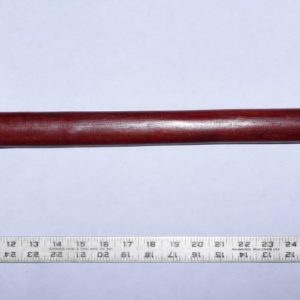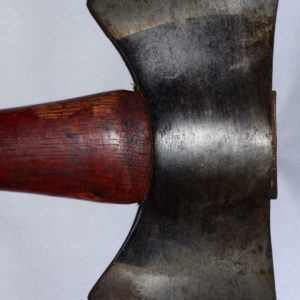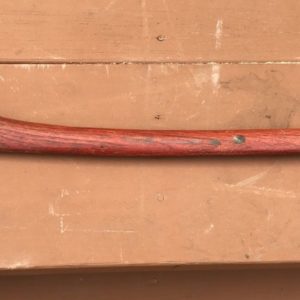Good morning everyone. I’m searching for advice on how to re-create a specific finish. The closest example I have found is that use on axe handles by the Plumb axe company and I have attached a few images. The red handles were a trademark of Plumb axes and I’m wondering how it was done.
I am thinking perhaps a red aniline dye or stain with shellac over that to recreate this. I’d be grateful for any thoughts. I’m not very experienced in this area of woodworking.
Thanks in advance
Steve

















Replies
Most likely a one-step finish via dipping tank. Try mixing satin poly with red paint 50/50.
if the first suggestion doesn't give you the results you are looking for, I suggest dye and a surface finish of your choice. I find TransTint dyes very good. I mix them with alcohol as it raises the grain less than water. I follow that with either shellac or Waterlox Original (my favorite.) With some woods, stain works OK, but with others like oak, it leaves very uneven color, unless you use a dye first to give it a basic color. It's going to be very difficult to achieve that deep red color with a stain. If you want to also see the wood, the dye will likely work better than the paint. but try them both.
Georgian Cherry gel stain from General Finishes over mahogany should get you pretty close.
Thank you for this suggestion.
I think I'll give this a try with Transtint dye and Waterlox original. It will be going on Hickory so I have no idea how it will turn out but probably better than Oak. I attached another photo which shows how the Plumb axe handle finish can be scratched though. This makes me think it looks like more of a stain (does that make sense?) but I'll have to try some tests.
When you mix Transtint with alcohol, do you use Isopropyl alcohol or some other type?
I use denatured alcohol but, 70% isopropyl would probably work. Your choice of carrier is a choice of how much 'other stuff' you can tolerate in your alcohol. Distilled water is also a good choice for Transtint dyes and solves the problem of 'other stuff'.
I also use denatured alcohol. I buy it by the gallon, mostly for the occasional shellac finish, and for cleaning things. I suspect that the original axe handle finish was probably a colored surface finish. I'm sure that it was not considered fine furniture; the finish needed to be quick and cheap.
Hickory, even more than oak, is so dense except for the pores, that a stain will bounce off the hard areas. A dye will give a much better overall color.
Waterlox is my favorite final finish; easy to apply and beautiful. A bit more labor than the standard commercial finish of sanding sealer and lacquer. When I need to duplicate that look, I use shellac.
It's hard for us small time woodworkers to exactly copy the processes that the factories use, as we don't have access to the materials, and the processes can be very complicated, with multiple layers of colorants, sealers, etc. Much of the time the finish is designed to make the wood look more uniform (and often like a different species) so nobody earlier in the construction process needs to pay attention to color and grain.
I'll attach a picture of a crotch mahogany coffee table I recently completed; the top has 6 or 7 coats of Waterlox. The pictures I have of the top are too big files to attach here.
Thanks again. Your comments about industrial finishes and process ring true. From the way it scratches off I suspect this was a colored coating rather than a dye or stain and probably tank dipped. I wonder what I might try for this scenario?
This forum post is now archived. Commenting has been disabled